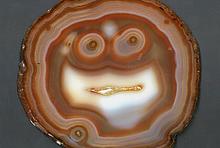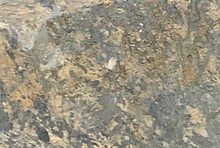Home PageAbout MindatThe Mindat ManualHistory of MindatCopyright StatusWho We AreContact UsAdvertise on Mindat
Donate to MindatCorporate SponsorshipSponsor a PageSponsored PagesMindat AdvertisersAdvertise on Mindat
Learning CenterWhat is a mineral?The most common minerals on earthInformation for EducatorsMindat ArticlesThe ElementsThe Rock H. Currier Digital LibraryGeologic Time
Minerals by PropertiesMinerals by ChemistryAdvanced Locality SearchRandom MineralRandom LocalitySearch by minIDLocalities Near MeSearch ArticlesSearch GlossaryMore Search Options
The Mindat ManualAdd a New PhotoRate PhotosLocality Edit ReportCoordinate Completion ReportAdd Glossary Item
Mining CompaniesStatisticsUsersMineral MuseumsClubs & OrganizationsMineral Shows & EventsThe Mindat DirectoryDevice SettingsThe Mineral Quiz
Photo SearchPhoto GalleriesSearch by ColorNew Photos TodayNew Photos YesterdayMembers' Photo GalleriesPast Photo of the Day GalleryPhotography
╳Discussions
💬 Home🔎 Search📅 LatestGroups
EducationOpen discussion area.Fakes & FraudsOpen discussion area.Field CollectingOpen discussion area.FossilsOpen discussion area.Gems and GemologyOpen discussion area.GeneralOpen discussion area.How to ContributeOpen discussion area.Identity HelpOpen discussion area.Improving Mindat.orgOpen discussion area.LocalitiesOpen discussion area.Lost and Stolen SpecimensOpen discussion area.MarketplaceOpen discussion area.MeteoritesOpen discussion area.Mindat ProductsOpen discussion area.Mineral ExchangesOpen discussion area.Mineral PhotographyOpen discussion area.Mineral ShowsOpen discussion area.Mineralogical ClassificationOpen discussion area.Mineralogy CourseOpen discussion area.MineralsOpen discussion area.Minerals and MuseumsOpen discussion area.PhotosOpen discussion area.Techniques for CollectorsOpen discussion area.The Rock H. Currier Digital LibraryOpen discussion area.UV MineralsOpen discussion area.Recent Images in Discussions
57851
LocalitiesFloitengrund, Mayrhofen, Schwaz District, Tyrol, Austria
19th Jan 2020 02:09 UTCMartin Rich Expert

19th Jan 2020 13:18 UTCWolfgang Hampel 🌟 Expert
Martin,
Between 1988 and 1990 I did a lot of geological fieldwork there, incl. geological mapping of the last 5 km of the valley and geochemistry of the so-called "floitites". I would very much prefer simply calling it Floitental/Floiten Valley and then add sublocalities like Zsigmondy Spitze, Gigalitz, Großer Löffler, Großer Mörchner, Greiner, Stillupgrund water tunnel, etc., i.e. the most prominent mountain tops or otherwise defineable geographical spots .
During my fieldwork I discovered one particularly big alpine cleft at the bottom of Großer Mörchner containing huge scolecite sprays, smoky quartz, adularia, stilbite, titanite and others. Unfortunately, some lucky person did find this cleft before I did and left a tool in there, so I considered it as "taken" and took only a single small 4 cm specimen with nice titanite crystals. Still today I wonder who this lucky person was...
Wolfgang
19th Jan 2020 14:29 UTCHarjo Neutkens Manager
Hi Martin,
I agree, plainly Floitengrund is better in my opinion. Before I'll change it back to Floitengrund I'll ask the one who changed it why he thought it had to be changed.
19th Jan 2020 14:36 UTCJolyon Ralph Founder
"Mineralized clefts in gneisses."
That's what the locality is describing, is it not?
otherwise if it's just a description for the valley, things might be added that are NOT associated with the mineralized clefts in gneiss.
This is a problem widespread with things that are added with a generic area name which actually refer to something more specific.
Maybe it needs to be changed to "Clefts in Gneiss, Floitengrund Valley, ...." but that's not for me to decide.
That's what the locality is describing, is it not?
otherwise if it's just a description for the valley, things might be added that are NOT associated with the mineralized clefts in gneiss.
This is a problem widespread with things that are added with a generic area name which actually refer to something more specific.
Maybe it needs to be changed to "Clefts in Gneiss, Floitengrund Valley, ...." but that's not for me to decide.
Alternatively update the description to something that actually matches the valley, eg "This valley contains many mineralized clefts in gneiss."
With such short descriptions I have had to do the best I can to correct them as I could. I am sure some things such as this may need to be changed, but hopefully this will encourage everyone to improve the quality of the locality names and descriptive text.
19th Jan 2020 14:37 UTCJolyon Ralph Founder
Then PLEASE add it as a mine, not the town name!!!!
19th Jan 2020 18:03 UTCHarjo Neutkens Manager
20th Jan 2020 01:21 UTCMartin Rich Expert
Thank you all for your effort! A proper description for localities helps a lot. In a lot of cases this was not done, because a lot of users are too lazy to do this, including me :( . Such non hierarchial areas like locality name clefts (minig area, metallic deposit area,...) would make sense if we could use a detailed geological map as base for it.
Wolfgang, I'm pretty sure that I was not the guy, which discovered the big cleft you mentioned! ;)
20th Jan 2020 08:53 UTCHarjo Neutkens Manager
would make sense if we could use a detailed geological map as base for it.
Martin, we do use a geological map for non-hierarchical geological features ;-)
It's just that the old entries haven't been added using them.
20th Jan 2020 20:06 UTCMartin Rich Expert




Mindat.org is an outreach project of the Hudson Institute of Mineralogy, a 501(c)(3) not-for-profit organization.
Copyright © mindat.org and the Hudson Institute of Mineralogy 1993-2024, except where stated. Most political location boundaries are © OpenStreetMap contributors. Mindat.org relies on the contributions of thousands of members and supporters. Founded in 2000 by Jolyon Ralph.
Privacy Policy - Terms & Conditions - Contact Us / DMCA issues - Report a bug/vulnerability Current server date and time: April 23, 2024 11:38:23
Copyright © mindat.org and the Hudson Institute of Mineralogy 1993-2024, except where stated. Most political location boundaries are © OpenStreetMap contributors. Mindat.org relies on the contributions of thousands of members and supporters. Founded in 2000 by Jolyon Ralph.
Privacy Policy - Terms & Conditions - Contact Us / DMCA issues - Report a bug/vulnerability Current server date and time: April 23, 2024 11:38:23











